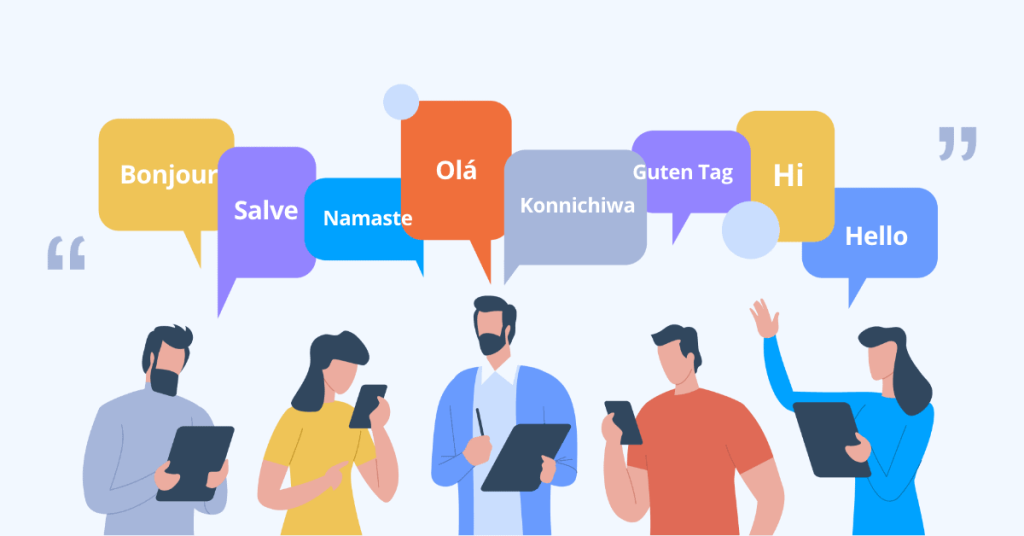In today’s interconnected world, the ability to communicate with a global audience is no longer a luxury—it’s a necessity. As an expert in application development, I’ve seen firsthand how implementing multi-language support can transform an app’s reach and impact. Whether you’re a startup aiming to scale globally or an established enterprise looking to expand your market share, multi-language support is a strategic move that can unlock unprecedented growth opportunities.

Why Multi-language Support Matters
Breaking Language Barriers
Language is one of the most significant barriers to global expansion. By offering your app in multiple languages, you can break down these barriers and make your product accessible to a broader audience. This inclusivity not only enhances user experience but also fosters a sense of connection and trust with your users.
Enhancing User Experience
A seamless user experience is crucial for the success of any application. When users can interact with your app in their native language, they are more likely to engage with it, leading to higher retention rates and increased customer satisfaction. This, in turn, can translate into higher conversion rates and revenue growth.
Expanding Market Reach
The global market is vast and diverse. By implementing multi-language support, you can tap into new markets and reach potential users who might have otherwise been inaccessible. This expansion can significantly boost your app’s user base and open up new revenue streams.
Best Practices for Implementing Multi-language Support
1. Plan Ahead
Before diving into the implementation, it’s essential to have a clear plan in place. Identify the languages you want to support based on your target audience and market research. Consider factors such as cultural nuances, regional dialects, and user preferences.
2. Use Internationalization (i18n) Standards
Internationalization (i18n) is the process of designing your app to support multiple languages. By adhering to i18n standards, you can ensure that your app is flexible and scalable, making it easier to add new languages in the future.
3. Leverage Translation Tools
There are numerous translation tools and services available that can streamline the process of translating your app’s content. These tools can help you manage translations efficiently and ensure consistency across different languages.
4. Localize Content
Localization goes beyond translation. It involves adapting your app’s content to suit the cultural and linguistic preferences of your target audience. This includes adjusting date formats, currency symbols, and even images to resonate with local users.

5. Test Thoroughly
Testing is a critical step in the implementation process. Ensure that your app’s UI, functionality, and content are thoroughly tested in all supported languages. This will help you identify and fix any issues before they impact the user experience.
Technical Considerations
1. Database Design
When implementing multi-language support, it’s essential to design your database to accommodate multiple languages. This may involve creating separate tables for translations or using a multi-language support module that integrates seamlessly with your existing database structure.
2. Front-end Implementation
The front-end is where most of the user interaction occurs, so it’s crucial to implement language switching seamlessly. Use a translation library or framework that allows users to switch between languages effortlessly. Ensure that the language switcher is easily accessible and intuitive to use.
3. Back-end Integration
The back-end plays a vital role in managing and serving translated content. Ensure that your back-end is capable of handling multiple languages and can deliver the correct content based on the user’s language preference. This may involve setting up language-specific APIs or endpoints.
4. Performance Optimization
Multi-language support can impact your app’s performance, especially if you’re serving a large amount of translated content. Optimize your app’s performance by using caching mechanisms, lazy loading, and other techniques to ensure a smooth user experience.
Real-world Examples
Case Study 1: E-commerce Platform
An e-commerce platform implemented multi-language support to expand its reach into international markets. By offering the platform in multiple languages, they saw a significant increase in user engagement and sales. The localized content also helped build trust with users, leading to higher customer retention rates.
Case Study 2: Mobile App
A mobile app developer added multi-language support to their app to cater to a global audience. The app’s user base grew exponentially, and they received positive feedback from users who appreciated the ability to use the app in their native language. This success led to further investments in localization and user experience enhancements.

Implementing multi-language support in your app is not just a technical investment—it’s a strategic move that can unlock global growth opportunities. By breaking language barriers, enhancing user experience, and expanding your market reach, you can position your app for success in the global marketplace.
As an expert in application development, I’ve seen the transformative impact of multi-language support on businesses of all sizes. Whether you’re just starting out or looking to scale, now is the time to invest in multi-language support and take your app to the next level.
By following the best practices and technical considerations outlined in this article, you can ensure a smooth and successful implementation. Remember, the key to global success lies in understanding and catering to the diverse needs of your users. Unlock the full potential of your app by embracing multi-language support and watch your global reach soar.
You can also read:
Knowledge Base and Natural Language Processing: Transforming Customer Experience in E-Commerce




